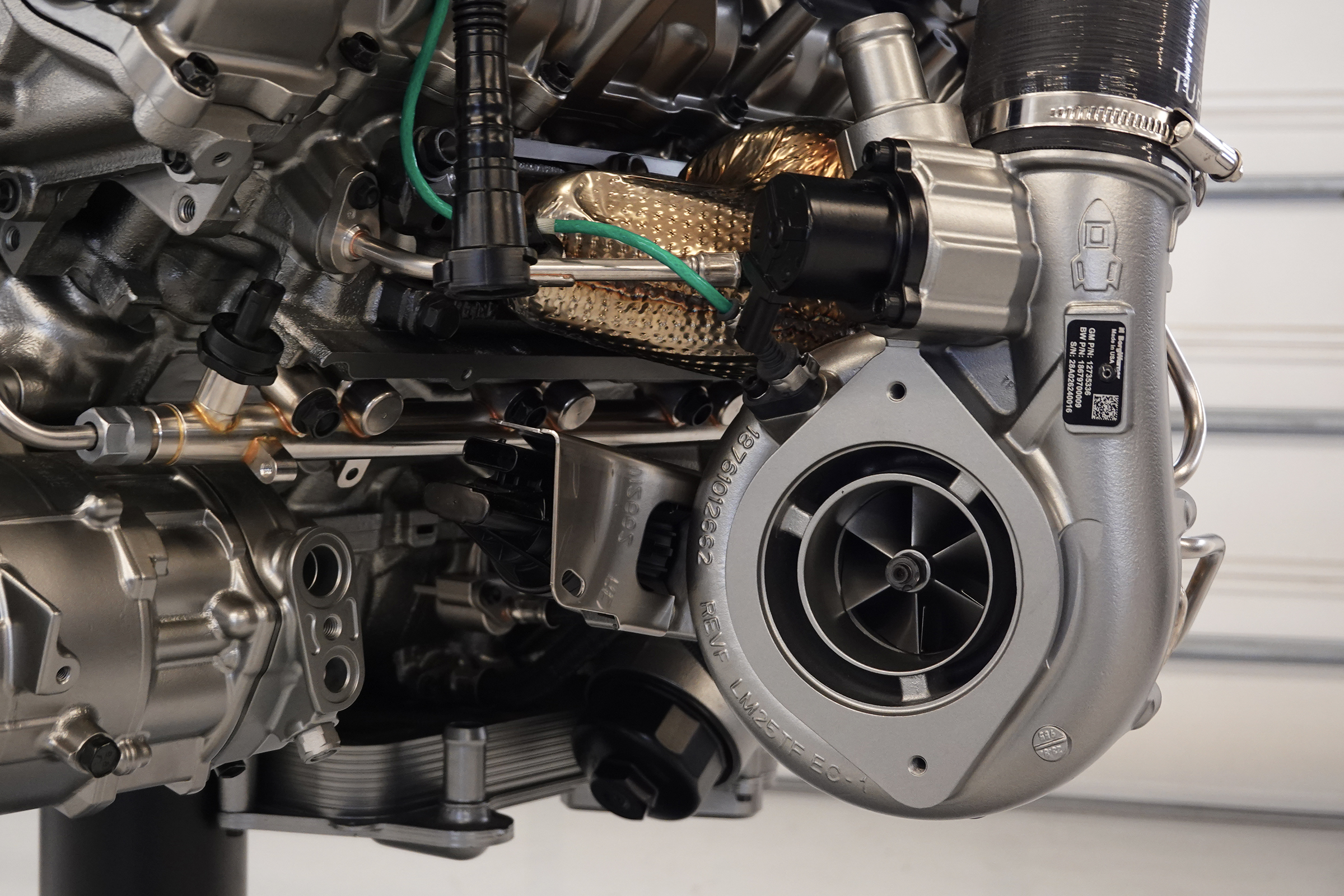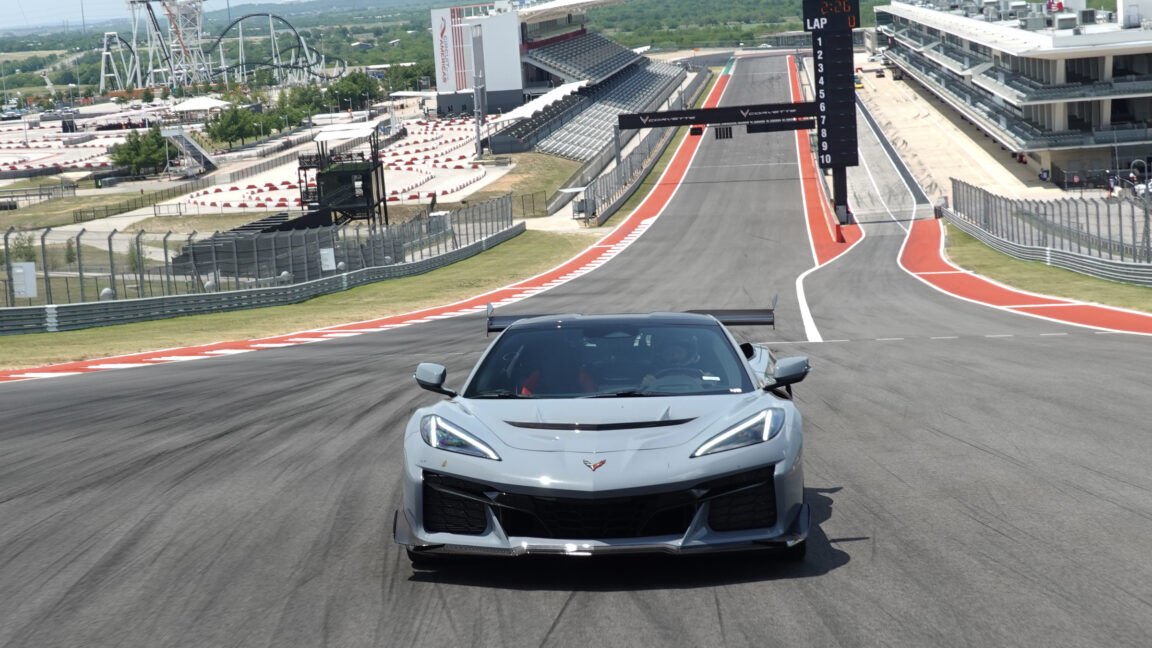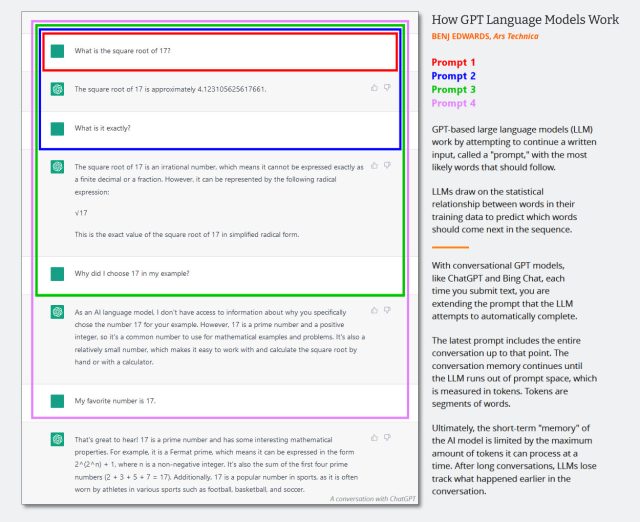Ten minutes after the city’s emergency curfew kicked in on a sunny evening five years ago, NYPD detective Jason Ragoo stood over a female protester he had just taken to the ground on West Street in Lower Manhattan.
As the woman covered her head and bent her knees in a fetal position, Ragoo gripped his baton like a battering ram, swung his arms back, and jabbed the end of the nightstick into her ribs, video of the incident newly obtained by THE CITY shows.
It was one of scores of incidents involving local police and demonstrators at the height of protests prompted by George Floyd’s killing by Minneapolis police that prompted more than a thousand complaints of excessive force to the Civilian Complaint Review Board, which investigates police misconduct.
The outcome of the case involving Ragoo is reflective of a pattern in which the most serious uses of force by police officers during the protests — even those that sparked outrage and calls for “defunding” the police — were often met with little to no discipline from the NYPD.
In the aftermath, Ragoo was issued “instructions” by the department on proper procedures, a low level of discipline that’s mirrored across dozens of similar cases.
Of the 1,052 excessive force complaints fielded by CCRB investigators during the 2020 protests, the board concluded that 66 involved force that was improper, excessive or unnecessary enough for the NYPD to administer the most severe level of discipline, which at minimum calls for the loss of 11 vacation days.
Only five of those officers received a penalty of more than 10 lost days, a review by THE CITY reveals.
Twenty-six officers, or 40 percent of the total, received no discipline at all.
Additionally, seven officers lost five vacation days or fewer, 15 were docked between six and 10 vacation days, and three officers retired prior to the conclusion of their disciplinary cases.
Remarkably, cases against 10 officers are still pending five years later, of which nine have plea deals that CCRB officials say are awaiting approval from NYPD Police Commissioner Jessica Tisch.
“As we reflect on the five years since George Floyd’s murder, the low rate of discipline for officers found to have used excessive force at protests remains both disappointing and concerning,” said Dr. Mohammad Khalid, interim chair of the CCRB. “Nonetheless, the Board remains hopeful that Commissioner Tisch will agree with our recommendations in the remaining cases.”
The stiffest penalty in the 66 cases was issued to Officer Brian Mahon, who the CCRB found had in one incident improperly shoved two protesters and hit two others with a baton, and then gave misleading statements about it to board investigators. In a plea deal reached under former NYPD Commissioner Keechant Sewell, Mahon agreed to a year’s probation and the loss of 40 vacation days.
Last year, as soon as his probationary period ended, Mahon was promoted to detective. He couldn’t be reached for comment and no one responded to a voicemail left with his union.
Late Monday, an NYPD spokesperson responded to a request for comment sent 10 days earlier, in which the department disputed some of the numbers in THE CITY’s analysis. The spokesperson said there were 23 cases that resulted in no discipline, not 26, and two retirements rather than three. The spokesperson also said there are five cases pending, not 10, but couldn’t immediately point to which cases accounted for the difference or say when they were resolved.
The spokesperson noted that 12 cases resulted in no discipline only after an internal NYPD disciplinary trial, where the CCRB served as prosecutors. THE CITY’s analysis found eight cases that went to administrative trial that resulted in not guilty recommendations, which resulted in no discipline.
“The administrative trial process is a significant one, and it should be understood and noted that an officer elected to participate in an administrative trial,” the spokesperson noted.
The weeks of protests, mass arrests and other heavy police responses formed one of the most turbulent times of protest in recent city history. They occurred just weeks after tens of thousands of New Yorkers — including NYPD members — died amid the COVID pandemic, and rattled a city already on edge.
While the protests were largely peaceful, they grew violent at times, injuring hundreds of police officers and causing significant property damage.
But the aggressiveness of the police response spurred three investigations by government entities, dozens of civil lawsuits that cost the city tens of millions of dollars in settlements, and a finding by the advocacy group Human Rights Watch that, during the NYPD’s mass arrest of protesters in The Bronx, the department had violated international human rights laws.
One of the settlements included an agreement by the city to alter the future policing of protests, while one of the probes elicited a rare apology from a sitting mayor, Bill de Blasio.
“There were choices made, strategic choices, that weren’t good choices, it turns out, that ended up causing problems. And we have to come to grips with that,” he said in a video posted to Twitter on Dec. 18, 2020.
He added that while the vast majority of officers performed their jobs correctly, “some individual police officers did something wrong. And that’s unacceptable, and there has to be discipline.”
For decades, the NYPD’s perceived soft-handed approach to discipline of its own members has been a point of contention, particularly within heavily policed communities, and that served as a catalyst for the angst and rage that accompanied the 2020 protests.
The NYPD commissioner has unilateral say over officer discipline, and can reject the recommendations of the department’s disciplinary judges and the CCRB — something former NYPD Commissioner Edward Caban did in dozens of cases during his 15-month tenure, which ended with his resignation amid a federal probe in September 2024. Many of those cases involved major incidents during the 2020 protests.
For Ragoo, it was then-NYPD Commissioner Dermot Shea in 2021 who blocked the CCRB from taking the case to a disciplinary trial. Instead, Shea used his authority to close the case on the grounds that the department’s Internal Affairs Bureau had already investigated Ragoo, and that Ragoo had already been punished — with the instructions on how to use proper force.
A CCRB investigative report on the incident says Ragoo was part of a group of officers who worked to clear West Street of protesters on June 2, 2020, shortly after an 8 p.m. curfew that de Blasio instituted in response to widespread looting that had taken place in the early days of the protests.
A man and woman who hung back from the protesters moving uptown, and away from the officers, got entangled with other officers in a moment that was only partially captured on the video THE CITY received from the CCRB through a public disclosure law request.
The report recounts Ragoo saying that when he first tried to apprehend the woman, the man reached his arm around the front of Ragoo’s neck and tried to pull him away from her. The report noted that what Ragoo described “was not captured on video, [and] was not corroborated by any other officers or witnesses.”
The report said after Ragoo took the female protester to the ground, he “lifted his baton up with both his hands on the baton and drove it down into the female’s torso,” as revealed in the newly obtained video.
The report added that Ragoo “had no independent recollection of having done this.” The victim couldn’t be identified to get her perspective, the report says.
Ragoo didn’t respond to a message seeking comment left at a phone number believed to be his, and the Detectives Endowment Association didn’t respond to an email seeking comment.
Jillian Snider, a former NYPD officer and adjunct lecturer at CUNY’s John Jay College of Criminal Justice, said the incident didn’t strike her as among the more egregious uses of force during the protests. She said it was important to keep in mind the context of the 2020 protests when assessing any officer’s conduct.
“The public was angry, and rightfully so, but the officers out there had to deal with the fact that everyone there hated them, and they still were there to protect them,” Snider told THE CITY. “On top of it, when you are taking orders from supervisors to arrest this guy for standing in the street, arrest this woman for standing in the street, that’s your job. You have to do it.”
The NYPD commissioner’s intervention was not unique to Ragoo’s case. The review by THE CITY found that in one-third of the 66 cases, the NYPD took action to prevent the CCRB from prosecuting an officer and imposed a lower penalty or no penalty, or else rejected recommendations for stiff discipline.
This included some of the highest-profile incidents during the protests, including one where an officer drove his patrol SUV into a crowd of protesters that had blocked the vehicle on a street in Brooklyn, as THE CITY previously reported.
While an NYPD administrative judge recommended a year probation and the loss of 40 vacation days for the officer, Daniel Alvarez, Caban determined Alvarez merited no discipline.
The NYPD also prevented the CCRB from administratively prosecuting Michael Sher, who was caught in a viral video pulling down a protestor’s mask and pepper-spraying him in the face. He got no discipline for that maneuver, and was only penalized for failing to document the incident in his memo book.
In addition, Shea, when he was commissioner, closed a case against Tarik Sheppard, the former deputy commissioner in charge of the NYPD’s press office, stemming from the protests.
Sheppard was accused of Tasing a protester after taking her to the ground in Brooklyn on June 4, 2020. But Shea determined that “it would be detrimental to the Police Department’s disciplinary process to allow the Civilian Complaint Review Board to continue its prosecution.”
That boilerplate language came with no further explanation, and Sheppard received no discipline.
As previously reported by THE CITY, Caban stood out among police commissioners for rejecting plea deals after officers had signed off on them, and imposing lower or no penalties. Among them was the case of Sgt. Bilal Ates, who agreed to forfeit 10 vacation days for body slamming a protester onto a street during a Floyd-related protest in Brooklyn in June 2020. Caban instead imposed no discipline.
In late 2020, The New York Times published an analysis that found the police department had lowered or eliminated the penalties sought by the CCRB in about 70% of disciplinary cases over the prior two decades.
Advocates say the department’s discrediting of CCRB findings has continued.
Lydia Colon, executive director for the advocacy group the Justice Committee, said the NYPD under Adams “routinely buries complaints, downgrades discipline, and delays discipline proceedings — despite promises to speed up the process.”
Not all of the disciplinary outcomes can be attributed solely to the actions of the police department.
One of the most viral incidents in the Floyd protests, in which officer Vincent D’Andraia forcefully shoved a female protester backward into the curb, also ended with no discipline, after the CCRB surpassed the 18-month statute of limitations for bringing administrative charges. In that case, the CCRB had to wait for the outcome of D’Andraia’s criminal trial, which resulted in a mediated dismissal.
The board’s prosecutors also negotiated plea deals in 10 cases that resulted in discipline below what the board initially sought, mostly yielding the loss of 10 vacation days. The lesser penalties were then approved by the NYPD.
In one additional case, the CCRB reconsidered its decision to substantiate charges against an officer at the request of the NYPD. That case resulted in no discipline.
The CCRB also has detractors — including many members of the NYPD — who say the agency is staffed with young investigators without crime-fighting experience, who are often quick to negatively judge the actions of officers in what can be life-or-death situations.
City Councilmember Bob Holden (D-Queens) has been among those to question whether the agency is taking the totality of situations into account before making a determination, particularly during the Floyd protests, which he said injured 400 officers, damaged 350 cars and caused over $1 million in damages.
“How people react is very different when it’s like a free-for-all, essentially,” Holden told CCRB officials at a public hearing in early 2023. “What was the situation at the time? Were the police under attack or were cars being burned? Was property being damaged? This all has to be taken into consideration.”
De Blasio’s public apology in late 2020 came on the same day that the city’s Department of Investigation released a 115-page report on the NYPD’s handling of the protests.
The review found a pattern of excessive force by inadequately trained police officers, but left that aspect largely to the CCRB to investigate.
Focusing instead on the bigger picture, the investigation agency reserved most of its criticism for the NYPD’s leadership.
“The problems went beyond poor judgment or misconduct of some individual officers,” the report stated. “The department itself made a number of key errors or omissions that likely escalated tensions and certainly contributed to both the perception and the reality that the department was suppressing rather than facilitating lawful First Amendment assembly and expression.”
In a nod to the NYPD’s historically adversarial relationship with the CCRB, the DOI report also counseled the department to seek a more cooperative stance with the board — calling it an integral step toward restoring public trust in the wake of the protests.
“A perception that the police operate with impunity damages the morale of the vast majority of good and dedicated police officers, makes recruiting a diverse police force more challenging, and makes the NYPD’s core crime-fighting mission more difficult,” the report concluded. “While NYPD leadership may believe in good faith that they can effectively monitor themselves, we urge them to accept that in this moment their own efforts are not enough to restore and preserve trust with the public, and to seek a true partnership with robust civilian oversight.”
State Attorney General Letitia James also investigated the protests, and later filed a lawsuit against the NYPD in 2021 that charged de Blasio and Shea with failing to prevent officers from using prohibited tactics.
That lawsuit was settled by the Adams administration in September 2023, with the NYPD agreeing to revamp the way it polices protests.
This includes introducing a tiered response rather than coming in full-force, and banning the tactic of “kettling,” in which protesters are encircled by the police and arrested en masse.
Under the first phase of the agreement, which is currently nearing completion according to two people familiar with its progress, the police department is aligning its written policies and its training with the new requirements.
In the next phase, an oversight committee that includes the state attorney general, DOI and external legal groups, will begin evaluating the department’s handling of protests as they happen.
As for discipline, the settlement required the NYPD to add protest-related misconduct as a factor that can bolster the severity of punishment for misuse of force.
Language to that effect, which says “inappropriate purpose or motivation, such as the use of force to punish, retaliate, coerce or harass a subject for any reason,” including for “engaging in legally protected First Amendment speech,” was added to the NYPD’s disciplinary guidelines last September.
Despite his reputation as a reformer while serving in the department for 22 years and attaining the rank of captain, Adams made few promises as a candidate for mayor on police reform: He vowed to cut the timeline of the disciplinary process in half and to publicly post the names of officers who are on an NYPD watchlist because of misconduct concerns.
There’s no public evidence either reform has been fulfilled, even as complaints about police misconduct against civilians have climbed to the highest level since 2012.
Mayoral spokesperson Kayla Mamelak Altus said the Adams administration has “sped up the disciplinary process for officers,” but didn’t provide supporting evidence or data of that when asked.
She touted as a boon to police accountability the administration’s implementation of ComplianceStat starting last summer, in which NYPD executives review body camera footage of incidents and require commanding officers to explain them.
“This initiative has reinforced accountability within the NYPD, strengthened trust with our communities, and recognized officers who exemplify excellence,” she said.





























 It's a tight fit in there.
Credit:
Michael Teo Van Runkle
It's a tight fit in there.
Credit:
Michael Teo Van Runkle
 That's a massive turbocharger, and there are two of them.
Credit:
Michael Teo Van Runkle
That's a massive turbocharger, and there are two of them.
Credit:
Michael Teo Van Runkle



 We drove it on track—will owners cope with this much power on the street?
Credit:
Michael Teo Van Runkle
We drove it on track—will owners cope with this much power on the street?
Credit:
Michael Teo Van Runkle











 A diagram showing how GPT conversational language model prompting works. It's slightly old, but it still applies. Just imagine the system prompt being the first message in this conversation.
Credit:
Benj Edwards / Ars Technica
A diagram showing how GPT conversational language model prompting works. It's slightly old, but it still applies. Just imagine the system prompt being the first message in this conversation.
Credit:
Benj Edwards / Ars Technica
 Credit:
Credit:
 An image of a boy amazed by flying letters.
Credit:
An image of a boy amazed by flying letters.
Credit:




